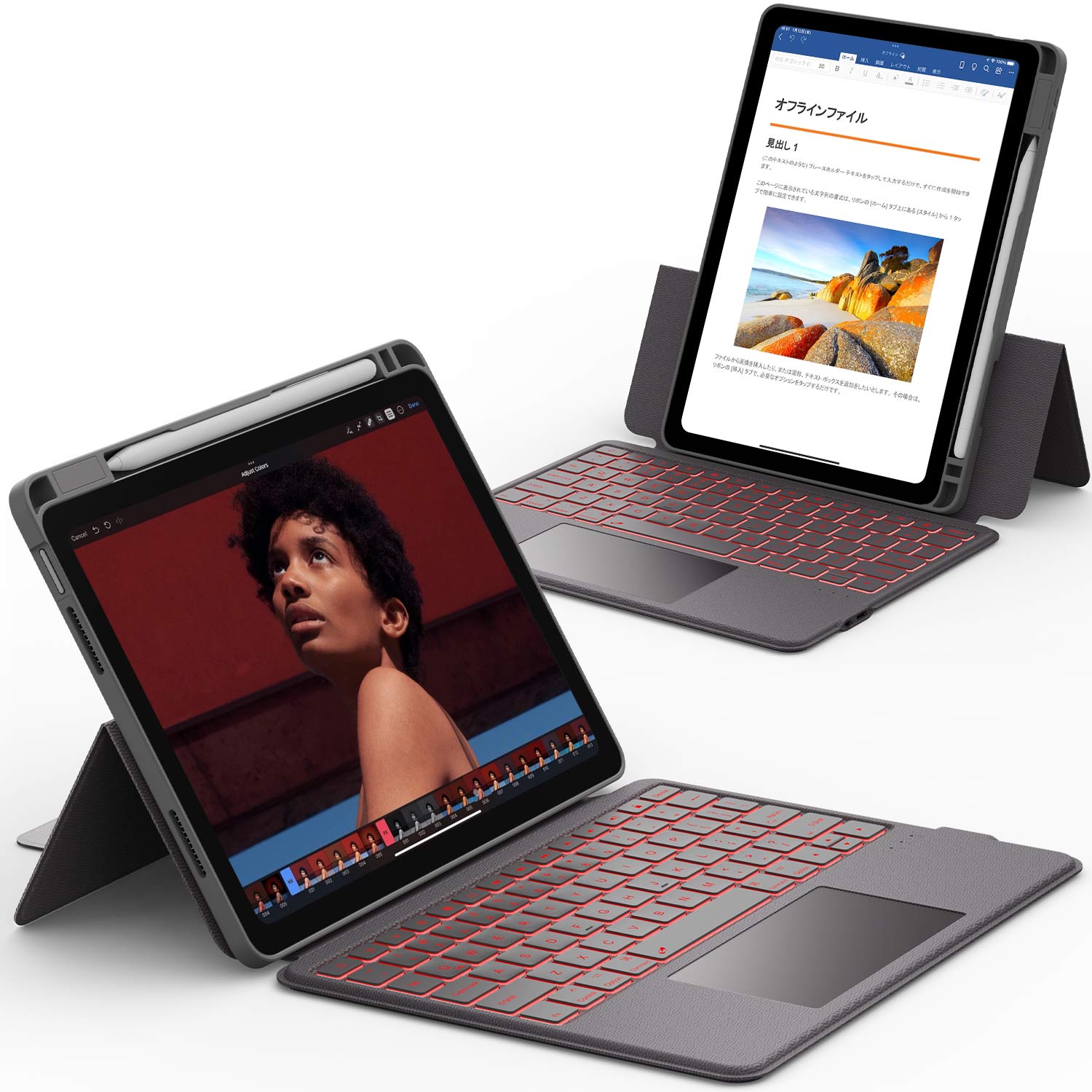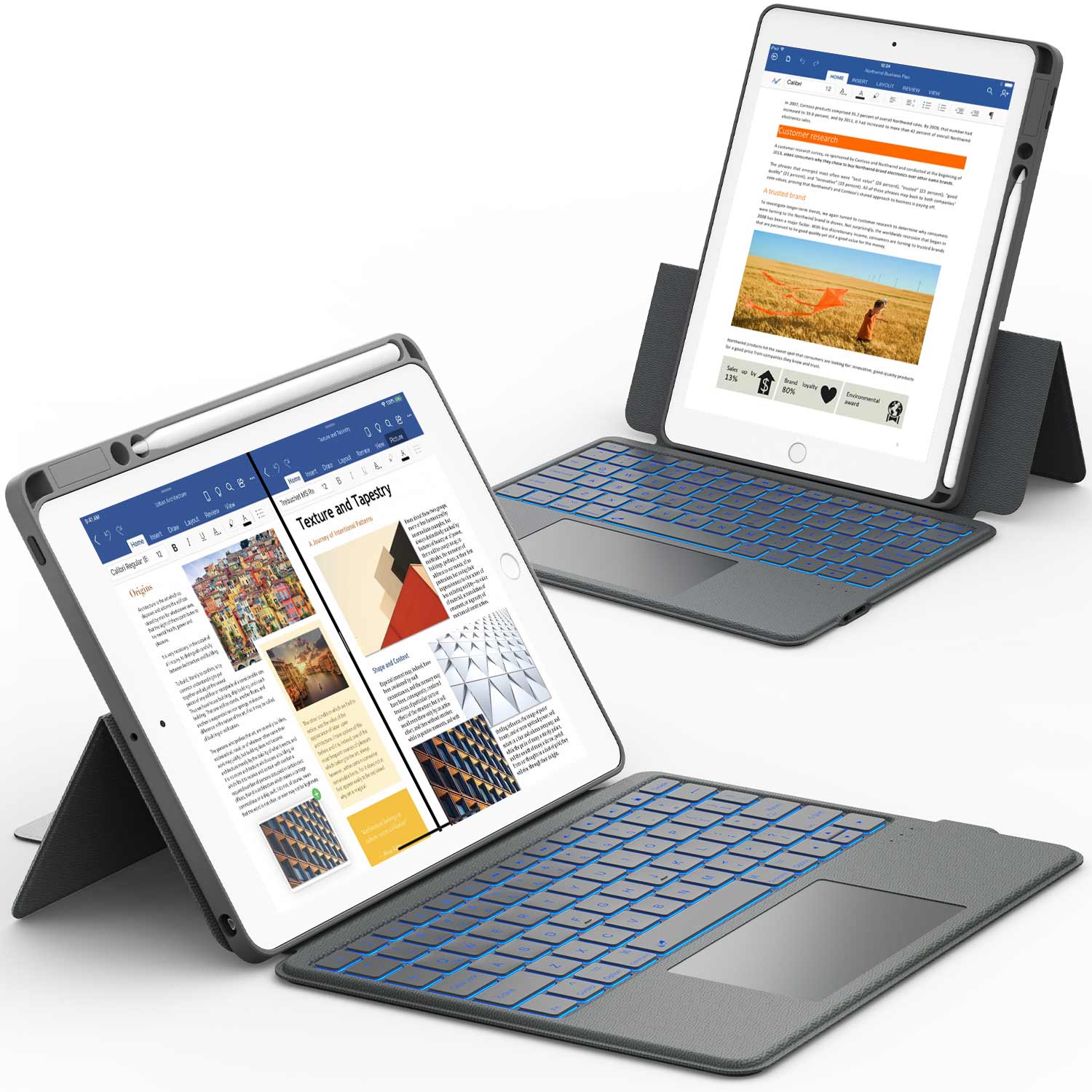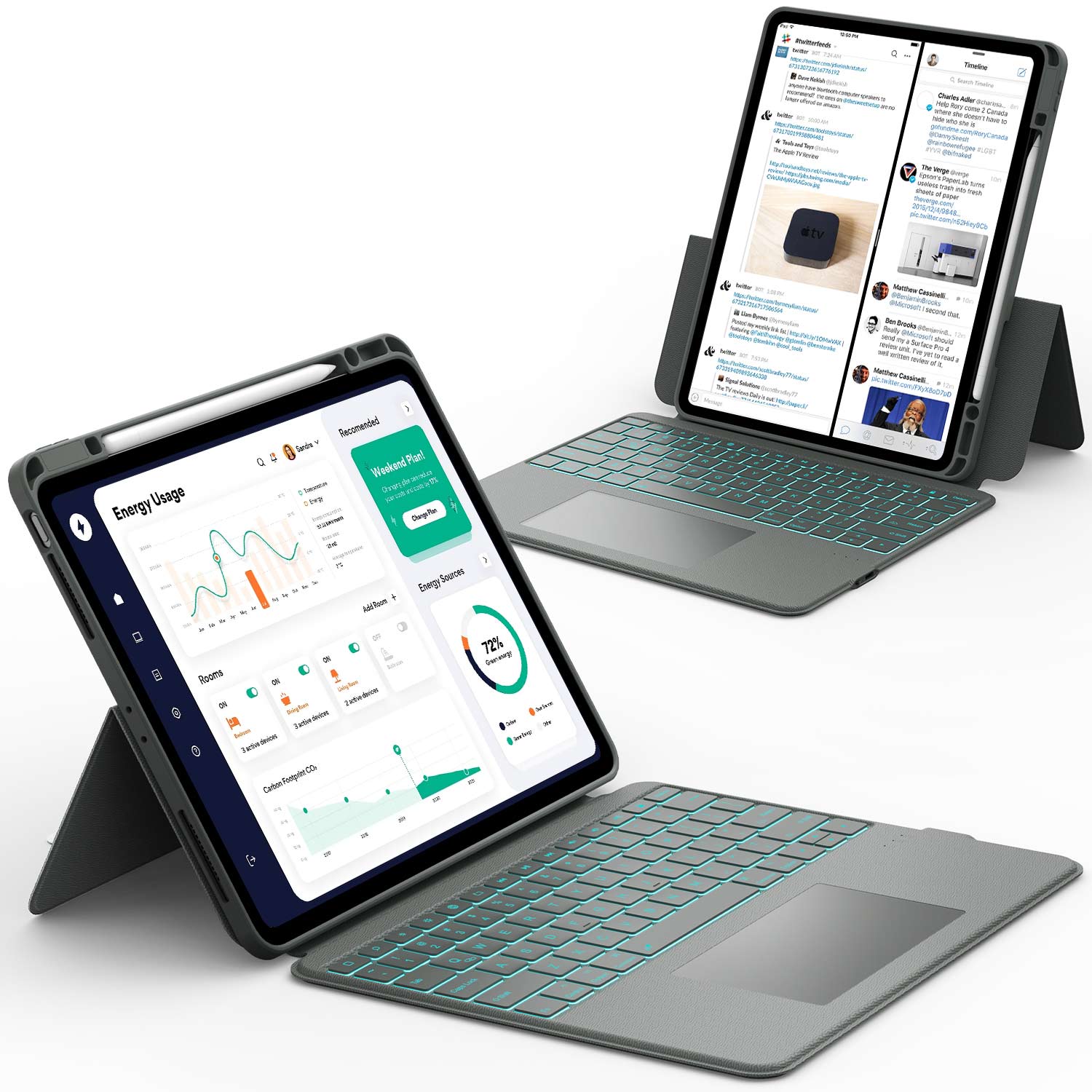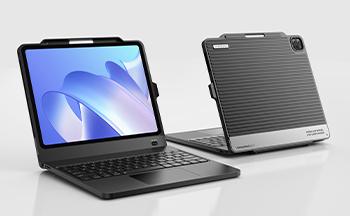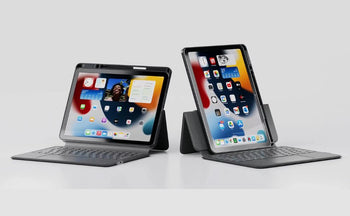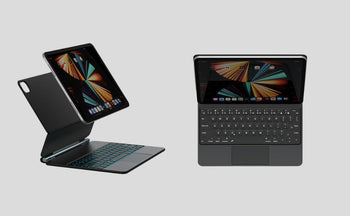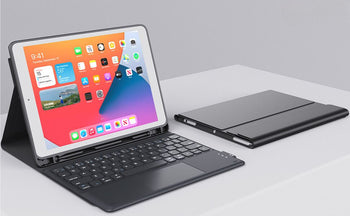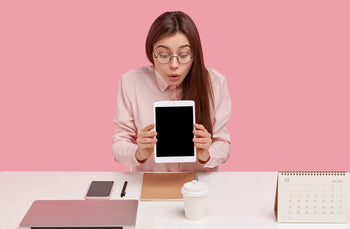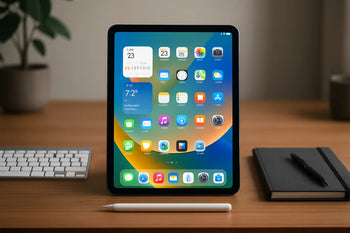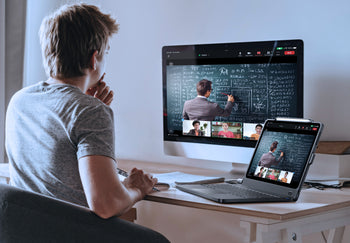Finding the best drawing tablet for beginners can feel tricky with so many options out there. Whether you want to try digital art with Clip Studio Paint, Adobe Photoshop, or Procreate, having the right tablet really matters.
The best drawing tablet for beginners balances ease of use, affordability, and compatibility with popular art programs.
You don’t need to spend a fortune to start creating. Tablets come with pressure-sensitive pens and offer a smooth drawing experience, working well with your favorite software.
If you’re curious about digital painting or sketching, these tablets let you learn without overwhelming you. That’s a relief, honestly.
Think about what software you’ll use. Some tablets work best with desktop apps like Photoshop and Clip Studio Paint, while others pair perfectly with iPads and Procreate.
Knowing this helps you pick a tablet that fits your style and setup. It’s not always obvious until you try a few, but it’s worth considering upfront.
What Beginner Drawing Tablets Mean

Choosing a drawing tablet means picking a tool that matches your needs and skill level. The main options differ in how you interact with them and who they suit best.
Understanding these differences helps you find a tablet that actually supports your growth in digital art. It’s easy to get lost in specs, but thinking about your habits is key.
Pen Tablet vs Display vs Standalone
A pen tablet connects to your computer and doesn’t have its own screen. You draw on the tablet surface while looking at your monitor.
These tablets are usually the most affordable and lightweight. They offer high pressure sensitivity, which helps with precision, but you’ll need some practice to get the hang of the hand-eye coordination.
A pen display tablet combines the drawing surface and a built-in screen. You draw right on the display, making the experience more intuitive and closer to traditional drawing.
These cost more but feel a lot more like drawing on paper. For some, that’s a game changer.
A standalone tablet works like a tablet computer with its own software. You don’t need a PC to use it, which means you can draw anywhere.
These are pricier but offer great freedom and portability. If you want to sketch on the couch or at a café, this is the way to go.
|
Type |
Screen on Tablet |
Needs Computer |
Cost Range |
Best For |
|
Pen Tablet |
No |
Yes |
Low |
Budget beginners |
|
Pen Display |
Yes |
Yes |
Mid-High |
Those wanting direct draw |
|
Standalone |
Yes |
No |
High |
Portable use |
Ideal Users: Students, Hobbyists, Newbies
If you’re a student or hobbyist, you’ll want a beginner drawing tablet that balances price and features. Students often lean toward pen tablets for their affordability and basic functions.
Hobbyists may prefer pen displays for a more natural drawing feel. It really depends on how you like to work and what you can spend.
New digital art newbies should go for tablets with easy setup and good sensitivity. Tablets with 4,096 to 8,192 pressure levels help your lines feel smooth and natural.
Skip the overly complex models with advanced features you probably won’t use yet. There’s no rush to go pro on day one.
Your workspace and budget matter, too. If you have a laptop or desktop, a pen tablet or pen display is a solid choice.
For those on the go or without a dedicated computer, a standalone tablet makes more sense—even with the higher price tag.
Stick with tablets known for solid build quality and responsive pens. Wacom and Huion are favorites among beginners because they’re reliable and have good support.
Must-Have Features For Beginners

Picking the right tablet means knowing which features will help you learn and improve without headaches. Look for a pen with smooth pressure sensitivity, decide if you want a screen or just a pad, check if it works with your device, and think about how it connects.
These details affect your comfort, ease of use, and price. It’s easy to overlook them, but they matter more than you’d guess.
Pressure Levels, Pen Lag & Tilt Support
Pressure sensitivity really matters if you want your lines to look natural. Try to get a tablet with at least 4,096 levels of pressure sensitivity.
This lets you control line thickness and opacity more smoothly. Some new pens offer up to 8,192 levels for even better precision.
Pen lag—the delay between your pen movement and the line appearing—should be as low as possible. Too much lag is just annoying, especially when you’re starting out.
Choose a tablet with a fast response time to make drawing feel natural. You’ll notice the difference.
Tilt support lets you angle your stylus like a real pencil or brush. This helps you create shading effects without switching tools.
Not every beginner tablet has tilt, but it’s handy if you want to try shading early on. It’s not a must, but it’s nice to have.
Screen vs No-Screen: Feel & Cost
Tablets with built-in screens let you draw right on the display. This feels natural but costs more.
If you go for a screen tablet, look for one with a good color gamut so your colors show up accurately. That’s especially important if you care about color work.
Non-screen tablets are often cheaper. You draw on the pad and see your lines on your computer or tablet screen.
It might take a bit to get used to this “indirect” feel, but they’re lighter, simpler, and great for learning basics without breaking the bank.
If you want something budget-friendly, check out a no-screen model like the One by Wacom. For screen tablets, the Wacom Intuos Pro hits a sweet spot between price and features.
OS Support: Windows, Mac, Android, iPadOS
Not every drawing tablet plays nice with all devices. Before you buy, check if the tablet supports your computer or tablet’s operating system.
Most tablets work with Windows and Mac. If you want to draw on your phone or tablet, make sure it also supports Android or iPadOS.
The Apple Pencil only pairs with iPads, so if you already own one, consider a tablet that supports it or works well with iPad apps. Compatibility affects what software you can use and how well the tablet responds.
Double-check the latest driver updates to avoid any annoying surprises. It’s not fun troubleshooting drivers when you just want to draw.
Connections: USB‑C, Bluetooth, Standalone
How your tablet connects can make a big difference for convenience. Many beginner tablets use USB-C cables for fast charging and data transfer.
This is reliable, but you’re tied to a wire. Bluetooth tablets let you draw wirelessly, which feels more comfortable, but you’ll need to keep an eye on battery life.
Wireless tablets sometimes have shorter battery life, so check how long the pen and tablet last on a single charge. Some tablets work standalone, meaning you can draw without connecting to a PC or tablet.
Standalone models have their own screen and operating system. They cost more but give you the freedom to draw anywhere.
Look for tablets with customizable shortcut keys to speed up your workflow. You can program the keys to your preference, which is super helpful as you get more comfortable.
Best Beginner Drawing Tablets

Picking the right drawing tablet can really change your digital art experience. The options range from simple, affordable tablets without screens to more advanced devices with built-in displays.
You want a tablet that feels natural, fits your budget, and matches your style—whether that’s sketching at your desk or drawing on the go. There’s no perfect answer, but some models stand out for beginners.
1. XP‑Pen Deco MW – Best Starter Drawing Tablet

The XP-Pen Deco MW makes a great first tablet if you want something reliable and beginner-friendly. It’s a screenless tablet, so you’ll draw on the tablet surface while watching your computer screen.
This helps you focus on learning without spending a ton. It connects via USB or Bluetooth, giving you the choice of wired or wireless freedom.
The pen supports 8,192 pressure levels, so your lines feel smooth and responsive. The working area is medium-sized—big enough for detail but not overwhelming your desk.
This tablet works with most drawing software like Photoshop, Krita, and Clip Studio Paint. You also get customizable shortcut keys to speed things up once you get the hang of it.
2. Ugee M908 – Cheapest Reliable Drawing Tablet

If you want the most affordable option that still works well, the Ugee M908 is a solid pick. It’s a budget-friendly, screenless tablet with a large drawing area, giving you plenty of space to practice.
The pen has good pressure sensitivity, though not as high as pricier models, but it’s enough for beginners balancing cost and performance. It’s easy to set up and works on both Windows and macOS.
Even at this price, the Ugee M908 includes customizable express keys for shortcuts. It’s a great way to start digital drawing without a big investment.
3. Huion Inspiroy Frego M – Wireless Pick Drawing Tablet

If you want wireless convenience, the Huion Inspiroy Frego M stands out. It offers Bluetooth connectivity with almost no lag, so you can draw comfortably without cables in your way.
This model is screenless and has a decent active area for detailed work. Like most Huion tablets, the pen supports up to 8,192 pressure levels, giving you excellent sensitivity and control.
It works well with popular art programs and strikes a nice balance between portability and precision. The rechargeable battery lasts long enough for a day of drawing, which is handy if you like moving around.
4. Wacom One – Best Screen Tablet

The Wacom One is perfect if you want a pen display tablet—a tablet with its own screen. You draw directly on the screen, which feels much more natural, especially if you’re used to paper.
It has a 13.3-inch display with full HD resolution, so images look clear and sharp. The color accuracy is good for beginners learning color work.
Wacom’s a trusted brand, and the One supports 4,096 pressure levels for precise control. It’s compatible with Windows and Mac, plus most drawing apps like Photoshop and Sketchbook.
It costs more than screenless tablets, but seeing your drawing right under your pen helps you learn faster. That’s worth a bit extra, in my opinion.
5. iPad (Air/Pro/Base) – Drawing Apps, Apple Pencil, Smooth ProMotion; Standalone Power

The iPad lineup (Air, Pro, and base models) is a powerful option if you want a portable drawing tablet that works without a computer. With the Apple Pencil, you get precise pressure and tilt sensitivity, making drawing feel smooth and accurate.
The iPad Pro has a Liquid Retina XDR display with ProMotion, so the screen refreshes up to 120Hz. That really cuts down on lag and makes strokes feel natural.
The iPad runs apps like Procreate and Adobe Fresco, which are favorites for beginners and pros alike. You can draw anywhere, and since the iPad runs independently, it’s more than just a drawing tablet—it’s a full device.
Curious about how the iPad Pro works for new artists? Discover more in Using the iPad Pro as a Drawing Tablet for Beginners & Pro Creators.
6. Galaxy Tab S9 FE – S Pen Included and Low Latency

Samsung’s Galaxy Tab S6 Lite and the newer S9 stand out as solid Android tablets with the S Pen right in the box. That pen feels smooth, with low latency and decent pressure sensitivity—drawing on these just feels nice.
The screens look bright and clear, and colors are accurate enough for beginners. Both models stay well under $350, so you don’t have to break the bank for a decent portable setup.
You can run popular Android apps like Autodesk Sketchbook and Infinite Painter. These tablets work independently, so you can draw, take notes, or just use them for everyday stuff.
The S Pen doesn’t need charging, which is a relief if you’re sketching for hours.
Tablet Cases To Make Drawing Easier & Stylish
Protecting your drawing tablet matters, especially if you’re always on the move. The right case can add a lot of convenience and keep your device safe from bumps and scratches.
Some cases even throw in extras like keyboards or pencil holders to help you stay organized or speed things up.
Chesona Rugged (iPad Pro/Air) – Backlit Detachable, Trackpad
The Chesona Rugged case is tough and keeps your iPad Pro or Air safe from drops and scrapes. It comes with a backlit detachable keyboard, which is a game-changer if you’re working in dim light.
The keyboard’s built-in trackpad lets you navigate smoothly without tapping the screen. That’s handy when you’re jumping between drawing and other tasks.
The case doesn’t add much weight, so your iPad still feels portable. If you want a secure, practical setup for sketching and typing, this case checks most boxes.
Chesona Cloud (For Samsung Galaxy Tablets) – Floating Backlit Keyboard

The Chesona Cloud series case fits the Galaxy Tab S7 to S10 series and brings a floating-style backlit keyboard. The keyboard hovers just above the tablet, which gives you a better typing angle and feels more comfortable.
Backlit keys come in handy for drawing in darker rooms. The shell is sturdy enough to handle scratches and the occasional drop.
The keyboard feels responsive, so switching between art apps and emails is pretty smooth.
Chesona ArmorDock (iPad Pro) – Robust Case With SSD Slot
The Chesona ArmorDock case is a good pick for iPad Pro users who need more storage. You can connect external SSDs right to your tablet, thanks to its built-in slot.
This case is seriously tough—definitely bulkier, but it’ll keep your iPad safe from hard knocks.
If you’re working with big files or want a way to back up your art on the go, this case gives you more options and peace of mind.
Pick Your Drawing Tablet By Needs & Budget

Picking a drawing tablet really comes down to your goals and your wallet. Some tablets are great for quick doodles, while others are built for serious projects.
Extras like tilt sensitivity and keyboard support can make a big difference in how smooth your drawing process feels.
Doodle vs Serious Art
If you’re just doodling or jotting ideas, a basic tablet with a smaller drawing area and a simple stylus gets the job done. These are light, easy to carry, and perfect for quick sketches or practicing shapes.
If you’re aiming for more serious art, you’ll want a bigger drawing surface and higher pressure sensitivity. Accurate color and fine detail really matter for illustration or animation.
Having a screen display on the tablet lets you see your work as you draw, which helps a lot if you’re working professionally.
Price Bands: <$60 • $60–150 • $150+
Tablets under $60 suit beginners who just want to try digital art or doodle. You get a smaller drawing area and basic features, but it’s a low-risk way to start.
Spend $60 to $150 and you’ll find better pressure sensitivity, larger workspaces, and sometimes even a color display. A lot of beginner-friendly brands offer solid options here.
Once you’re over $150, you get things like tilt support, multi-touch, and sharper screens. These are great if you want to level up or need something that’ll keep up as your skills grow.
|
Price Range |
Features to Expect |
Who It’s For |
|
<$60 |
Small area, basic pen pressure |
Casual doodlers |
|
$60–150 |
Medium area, better pressure, sometimes color screen |
Hobbyists and serious beginners |
|
$150+ |
Large area, tilt, touch, high res |
Artists wanting pro features |
Useful Extras: Tilt Pen, Keyboard, Drivers
A tilt pen lets you draw at different angles, kind of like using a real pencil or brush. This gives you more variety in your lines and lets you shade more naturally.
Not every tablet has tilt support, so check before you buy if that matters to you.
Having a keyboard nearby can speed things up. Some tablets pair easily with wireless keyboards or offer shortcut buttons, which save time when you’re switching tools or undoing mistakes.
Drivers connect your tablet to your computer. Brands with easy-to-install, updated drivers save you headaches and keep your drawing smooth.
Ready to try tracing on your new tablet? Explore fun and easy options in Best iPad Apps for Tracing: Tools for Artists and Kids.
Final Thoughts
You’re all set to find your best drawing tablet for beginners. Pick a pen tablet like XP‑Pen Deco MW or Huion Frego M for great value, or go standalone with an iPad or Galaxy Tab for full creative freedom.
Focus on features like pressure sensitivity, tilt, and screen vs no-screen to match your style. Add a Chesona keyboard case to turn your tablet into a work-ready device with comfort and protection.
With the right tools, your art can flourish from day one. Scroll up, choose the perfect fit for your needs, and let your creativity flow!
If your tablet ever freezes while you’re drawing, don’t worry. Get quick help from iPad Hard Reset Guide: Fix Your Frozen Tablet in Seconds.
Frequently Asked Questions on the Best Drawing Tablets for Beginners
Should you start drawing with a tablet?
Starting with a drawing tablet is honestly a great idea if you want to try digital art. Tablets let you draw right on the screen or pad, and editing or experimenting is a breeze compared to paper.
If you already enjoy traditional drawing, a tablet can open up new skills and keep your art more tech-friendly. No need to be an expert—plenty of beginner tablets come with simple software.
Some people find tablets awkward at first because it’s a different kind of hand-eye coordination than paper. With a little patience and practice, you’ll get the hang of it. Plus, you get perks like layers and undo—stuff you just can’t do with traditional art.
What's the best affordable drawing tablet?
If you want a solid tablet but don’t want to spend a fortune, check out brands like Wacom, Huion, and XP-Pen. They all make reliable beginner models.
The Wacom Intuos is a favorite for its price and solid build. It works with most computers and comes bundled with basic drawing apps.
The Huion H610 Pro offers a bigger drawing area and good pressure sensitivity, which is nice if you want more space to work.
Prices for decent tablets usually land between $50 and $150. Just make sure the one you pick works with your computer or tablet before you buy.
What is the difference between a graphic tablet and a drawing tablet?
A graphic tablet usually means there’s no screen—you draw on the pad, but your image pops up on your computer monitor. They’re often cheaper and great for detailed work.
A drawing tablet can mean any tablet for drawing, including those with screens, like the iPad or Wacom Cintiq. With a screen, you draw right where you see your art, which feels more natural.
Graphic tablets are good for precision, but you need to get used to looking up at the screen while your hand moves on the pad. Tablets with screens cost more, but most people say it feels better for drawing.
What should I buy to start drawing?
So, you're thinking about drawing with a tablet. Here's what you'll need:
- A drawing tablet or a screen tablet
- A computer or mobile device that works with your tablet
- Drawing software (sometimes tablets throw in a free program or two)
- A stylus pen (usually comes in the box)
Honestly, start with a simple tablet that doesn't break the bank. Try out beginner-friendly apps like Krita, Medibang Paint, or Autodesk SketchBook.
Double-check that your computer can actually handle the tablet. Set up a comfy spot to work, and make sure the lighting isn't awful—you'll want to avoid tired eyes if you draw for a while.
There's a ton of choices out there. If you're unsure, poke around for reviews or YouTube videos showing the tablets in action before deciding.
